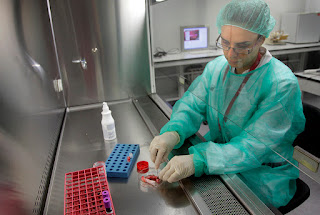The Benefits of Cord Blood Banking
Cord blood banking is the process of collecting and storing the blood that remains in the umbilical cord and placenta after a baby is born. This blood is rich in stem cells, which are immature cells that have the ability to develop into different types of cells in the body. Cord blood stem cells are a promising source of treatment for a wide range of diseases and disorders, including cancer, blood disorders, and immune system disorders.
1. Potential for life-saving treatments
One of the most significant benefits of cord blood banking is the potential for using cord blood stem cells to treat a variety of diseases and disorders. Cord blood stem cells have been used to treat more than 80 different conditions, including leukemia, anemia, and immune system disorders. In some cases, cord blood stem cells have even been used to regenerate damaged tissue, such as in the case of spinal cord injuries.
2. Non-invasive collection process
Cord blood can be collected without any harm to the mother or baby. The collection process takes place after the baby is born and the umbilical cord has been cut. The blood is collected from the cord and placenta, which are usually discarded after birth. This means that cord blood collection is a non-invasive and painless process for both the mother and baby.
3. High success rate of stem cell transplants
Cord blood stem cell transplants have a high success rate, with fewer complications compared to stem cell transplants using bone marrow or peripheral blood. Cord blood stem cells are also less likely to be rejected by the recipient's body, which means that there is a lower risk of complications and a higher chance of successful treatment.
4. Access to a diverse pool of stem cells
Cord blood banking allows families to access a diverse pool of stem cells that can be used to treat a variety of diseases and disorders. This is especially important for families with a history of genetic disorders, as cord blood stem cells can be used to treat these conditions even if the donor is not a genetic match. In addition, cord blood stem cells have been shown to be more adaptable and flexible than other types of stem cells, which means they may be more effective in treating a wider range of conditions.
5. Potential for future use
Stem cell research is an evolving field, and new treatments and uses for cord blood stem cells are being discovered all the time. By banking your baby's cord blood, you are preserving the potential for future treatments that may not yet be available. This means that even if your child does not currently have a medical need for their cord blood, it could still be used to treat them or a family member in the future.
6. Peace of mind for families
For many families, the decision to bank their baby's cord blood is driven by a desire to have a source of stem cells on hand in case of a medical emergency. Cord blood banking provides peace of mind for families, knowing that they have a potential treatment option available if it is needed. It can also provide families with a sense of control and empowerment in a potentially stressful situation.
7. Ethical considerations
Cord blood banking is a ethically sound choice for families. The collection process is non-invasive and does not pose any risk to the mother or baby. In addition, cord blood stem cells are often used as an alternative to embryonic stem cells, which raises ethical concerns for some people. By banking cord blood, families have the opportunity to make a positive contribution to medical research and treatment options without raising any ethical concerns.
Conclusion
Cord blood banking offers a number of potential benefits for families. From the potential for life-saving treatments to the peace of mind that comes with having a source of stem cells on hand, cord blood banking is a decision that is worth considering for any family. While there are costs associated with cord blood banking, the potential benefits far outweigh any financial considerations for many families.


Comments
Post a Comment